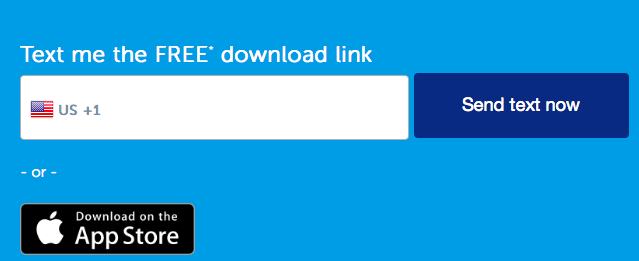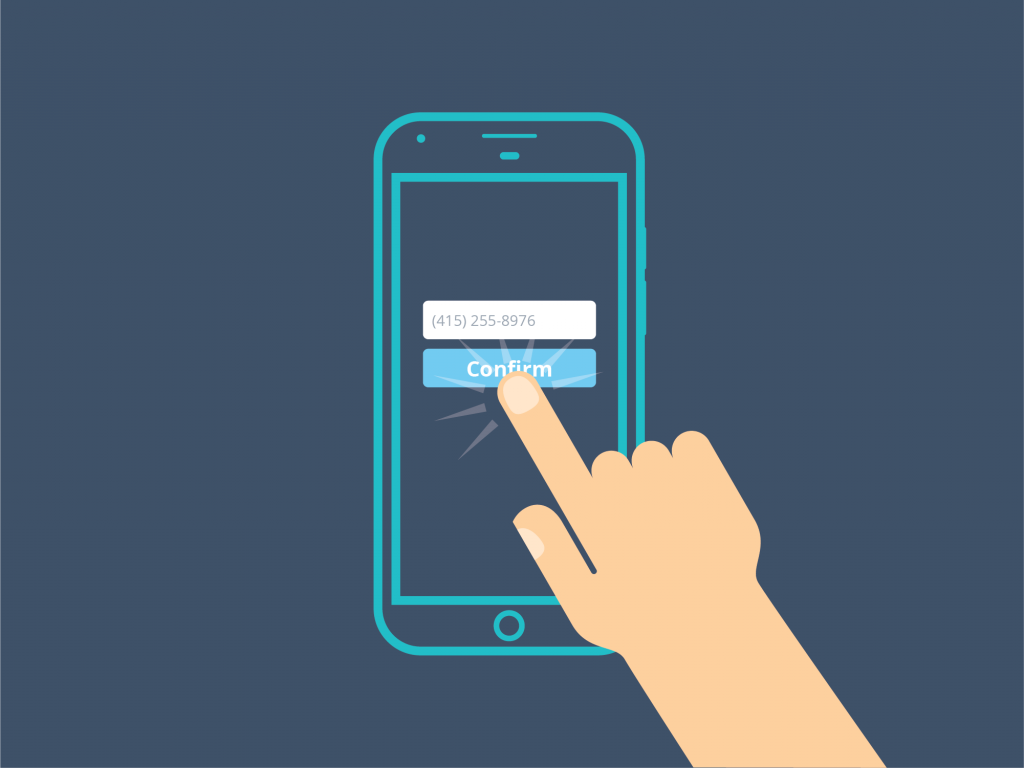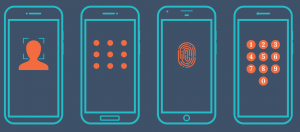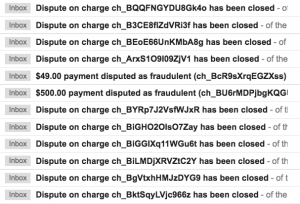Go Beyond the Badges
Just putting badges on your website linking to the Apple App Store and Google Play are not enough to drive downloads anymore. People have become inured to them -- although that doesn't mean you should forego making them as prominent as possible on your homepage. Instead, supplement these badges with something much more effective: a call-to-action button labeled "send me the app," prompting users to input their phone numbers and click. Almost instantly, they receive a text message on their mobile device with a link to download the app. In this scenario, the user is effectively sharing a link with him or herself, which explains why the conversion rate is so high. Text-to-download messages cost 1% of what an online ad does and have 840 times more conversions! http://bit.ly/2nf9hHl Share on X It works so well because of its simplicity -- it makes it easier than ever for people to download the app. Never assume that because you know how to find your own app that other people will be able to as well. And if you can save people from having to go looking for it in the Apple App Store or Google Play, that eliminates the chance that they'll be distracted by a competitor's app. This is a growing threat amid today's glut of selections in just about every category.Bypassing App Stores
These tactics make even more sense when considered in light of consumer behavior. Only 40% of smartphone owners browse app stores to find new things to download, according to a study by Google and Ipsos. This has dropped about 20 percentage points over the past few years, which has led some analysts and media outlets to call apps an endgangered species, or worse, dead. Most people would beg to differ, for one reason or another. Over 2.7 million apps already compete for our attention in Google Play and about the same number appear in the Apple App Store. But there is such a thing as too many choices, especially when they're being accessed on smaller screens. Best of all, you don't have to wait until your app goes live before you start using the text-to-download strategy -- only in this case, you offer to send people notifications when the app launches, and include the download URL in the text message.
And in the interim, you build up a list of interested people to whom you might send marketing messages as well.
Best of all, you don't have to wait until your app goes live before you start using the text-to-download strategy -- only in this case, you offer to send people notifications when the app launches, and include the download URL in the text message.
And in the interim, you build up a list of interested people to whom you might send marketing messages as well.
App Discovery Is Changing
Just putting an app in Google Play or Apple's App store is no longer enough to get discovered -- let alone that enough people will magically download and just as readily convert to generate the desired amount of revenue. Unfortunately, in order to get more downloads, you need to have more downloads. It can actually carry more weight than ratings in some situations, or at least when you're trying to move up from the bottom portion of app rankings. Of course, ratings are still important when people are deciding between competing apps to download. But the stakes are much higher in app store optimization (ASO) than they are in search engine optimization (SEO), as there's only so much that fits on mobile users' screens. The following numbers knock this home:- Half of all app store downloads result from one of the top three apps within any category searched.
- Just under half of smartphone owners download zero apps in a typical month -- and that's based on a three-month average.
- Among the 51% of smartphone owners who do download apps during the course of a month, "the average number downloaded per person is 3.5," says a report on the subject by comScore. “However, the total number of app downloads is highly concentrated at the top, with 13 percent of smartphone owners accounting for more than half of all download activity in a given month.”
- This is actually an improvement over two years ago, when comScore found that almost two-thirds of U.S. smartphone owners downloaded zero apps in a typical month -- although apparently the difference reflects a change in comScore's methodology rather than upheaval among the app economy. Interestingly, mobile-app advertising company Tune, found that 75 percent of U.S. smartphone owners download at least once a month, and that American smartphone owners download an average of 2.3 apps per person a month.
Even though things are improving, apps with more downloads rank higher in app store search results -- but how do you get enough downloads to gain visibility?
The most cost effective way to drive downloads is to put an onboarding widget on your webpage that sends an SMS message to visitors. The message could deliver a link to the App or Play Store where that individual could download the app. This could include an additional step to verify the user (although it doesn't have to), improving the onboarding experience for all involved while giving you a simple way to ensure your new users are real people.
With or without that extra step, mobile messaging can increase conversion rates and opt users into a database for marketing communications -- which in turn can provide additional opportunities for conversion and revenue generation.
The beauty of all of this: both SMS and even delivering the messages via voice calls often cost just pennies per transaction.
This is exponentially cheaper than online display advertising, no matter whether you pay for them based on the number of views or clickthroughs -- especially because, like we alluded to earlier, the "text me the app" strategy converts 840 times better than app install ads.
Online ads for iOS apps average about $2.78 per install. Multiply that by the number of downloads it takes to get on the top three search results for your chosen keyword -- unfortunately, it's 300,000 to 400,000 -- and you would need to budget almost $1 million for advertising that app.
Recommendations are actually a more popular driver of downloads -- 56% of people go by referrals from someone they know, including family, friends and coworkers. You can encourage that word-of-mouth marketing using additional call-to-action text suggesting that a user send the download URL to friends. You could even layer on a landing page for that download so you can add a bit of personalization to the onboarding by reminding visitors who referred them to the app.
Are you ready to see for yourself how effective this strategy is? Click here to get started.
This could include an additional step to verify the user (although it doesn't have to), improving the onboarding experience for all involved while giving you a simple way to ensure your new users are real people.
With or without that extra step, mobile messaging can increase conversion rates and opt users into a database for marketing communications -- which in turn can provide additional opportunities for conversion and revenue generation.
The beauty of all of this: both SMS and even delivering the messages via voice calls often cost just pennies per transaction.
This is exponentially cheaper than online display advertising, no matter whether you pay for them based on the number of views or clickthroughs -- especially because, like we alluded to earlier, the "text me the app" strategy converts 840 times better than app install ads.
Online ads for iOS apps average about $2.78 per install. Multiply that by the number of downloads it takes to get on the top three search results for your chosen keyword -- unfortunately, it's 300,000 to 400,000 -- and you would need to budget almost $1 million for advertising that app.
Recommendations are actually a more popular driver of downloads -- 56% of people go by referrals from someone they know, including family, friends and coworkers. You can encourage that word-of-mouth marketing using additional call-to-action text suggesting that a user send the download URL to friends. You could even layer on a landing page for that download so you can add a bit of personalization to the onboarding by reminding visitors who referred them to the app.
Are you ready to see for yourself how effective this strategy is? Click here to get started. 

 Notifications
Notifications 

